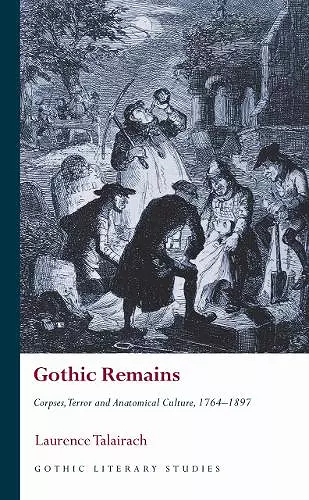Gothic Remains
Corpses, Terror and Anatomical Culture, 1764-1897
Format:Hardback
Publisher:University of Wales Press
Published:15th Oct '19
Currently unavailable, and unfortunately no date known when it will be back

This book explores the intersection of Gothic literature and anatomical culture, revealing how medical practices influenced the genre's evolution and themes of death.
In Gothic Remains: Corpses, Terror and Anatomical Culture, 1764-1897, the author delves into the intricate relationship between Gothic literature and anatomical culture from the late 18th to the late 19th century. By examining works from Horace Walpole to Bram Stoker, the book reveals how the Gothic genre evolved alongside the medical profession, highlighting a unique interplay between horror and the scientific understanding of the human body. This exploration offers a genealogy of significant Gothic texts that reflect the period's fascination with death and decay.
The Gothic tradition has long been captivated by macabre imagery, including decomposing bodies and spectral skeletons, which evoke both terror and a sublime beauty. Gothic Remains investigates these themes, focusing on how anatomical culture informed Gothic conventions. The book discusses various elements, from the use of skeletons in medical education to the grim realities of bodysnatching and live burials, ultimately illustrating how these practices shaped the narrative and aesthetic choices of Gothic writers.
Through a historicist lens, the author provides fresh insights into the dialogue between medical literature and Gothic texts. This study not only addresses the relationship between literature and anatomy but also presents close readings of Gothic works concerning dissection, a topic that has been underexplored. By shedding light on the historical context of medical education and its impact on the perception of death, Gothic Remains contributes significantly to our understanding of the genre's evolution and its cultural implications.
ISBN: 9781786834607
Dimensions: unknown
Weight: unknown
320 pages